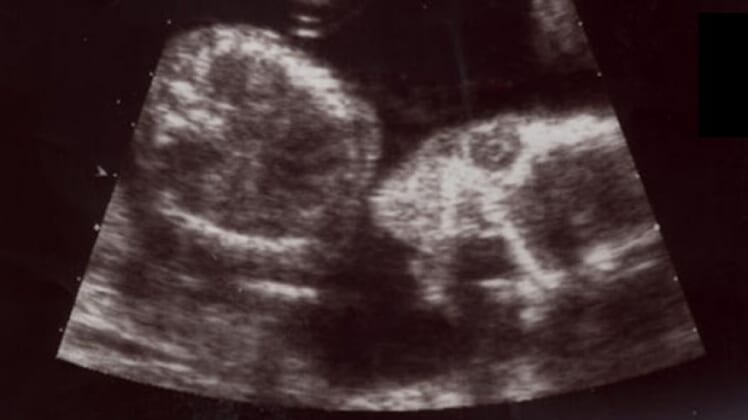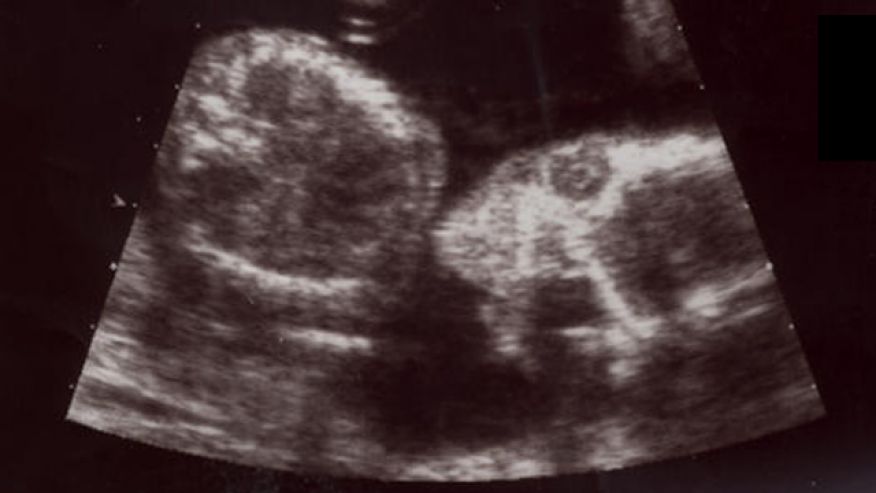Is a new blood test going to replace amniocentesis?

I remember 15 years ago, my colleagues and I in high risk obstetrics were discussing the future possibility of analyzing fetal cells in maternal blood. Back then, the task seemed daunting since there was little knowledge regarding how to identify the fetal cells from the mother’s blood, but we did know that every pregnant patient had circulating fetal cells in her system, due to the vasculature of the placenta, which allows fetal cells to penetrate into the maternal side.
We discussed this issue because we hoped, by identifying the fetal cells, we might be able to recognize chromosomal abnormalities from the maternal blood. However, the science at that time was limited.
As time passed, alternative tests were developed such as the nuchal translucency (NT) test. This test uses an ultrasound to measure the fetal neck, as well as measuring certain chemicals in the maternal blood. The test is good in terms of determining whether or not the mother has a high chance of carrying a child with a genetic abnormality – however, doctors still require an invasive test such as an amniocentesis to clearly visualize the fetal chromosomes and rule out trisomies.
Fetal trisomies are extra copies of chromosomes in the human cell. Humans typically have 23 pairs of chromosomes, but occasionally an extra copy will occur, leading to certain birth defects such as Down syndrome, Edwards syndrome or Patau syndrome.
Down syndrome, which is caused by an extra copy of chromosome 21, is associated with intellectual disabilities, digestive issues and congenital heart defects. It occurs in one out of every 740 newborns.
An extra copy of chromosome 18, on the other hand, causes Edwards syndrome – and in some cases, miscarriage. Babies born with Edwards syndrome usually have congenital heart defects and various other medical conditions, including shortened lives. It occurs in one out of every 5,000 newborns.
Finally, Patau syndrome is caused by an extra copy of chromosome 13 and is also associated with a high rate of miscarriage. Newborns with Patau syndrome rarely survive past the first year. The syndrome occurs in one out of every 16,000 newborns.
An amniocentesis is usually done between 16 and 20 weeks of pregnancy, and it entails placing a needle in to the uterus and extracting amniotic fluid for fetal cell analysis. The problem is, the procedure can carry complications, such as infection, rupture of membrane, or even miscarriage. Many times, false positive results from non-invasive tests such as the NT lead to unnecessary amniocentesis tests.
However, the new century has brought new science. Since the conclusion of the National Genome Project, doctors and researchers are once again paying new attention to the old idea of identifying fetal DNA in maternal circulation.
Recently, I started using the Harmony Prenatal Test, which is a new blood test that utilizes advances in non-invasive prenatal testing to detect common birth defects in fetuses as young as ten weeks. The test detects trisomy 21, 18 and 13 by measuring the levels of fetal chromosomes in a mother’s blood. The test does not screen for neural tube defects.
In addition, a team at the University of Washington have successfully reconstructed the whole genome sequence of a fetus. This will allow doctors to look at single gene defects, otherwise known as Mendelian disorders, which affect one percent of newborns. These disorders include Huntington’s disease and cystic fibrosis. In a study, the test was conducted 18 weeks into couples’ pregnancies and proved to be approximately 98 percent accurate in predicting Mendelian disorders and even detected “de novo” or brand new mutations in a fetus.
Personally, I’m very excited by the development of these non-invasive, comprehensive tests to screen fetuses for genetic disorders. I hope researchers will continue with their progress in this area of obstetrics, so doctors and families can have a better awareness of any health challenges that their newborn may face.

